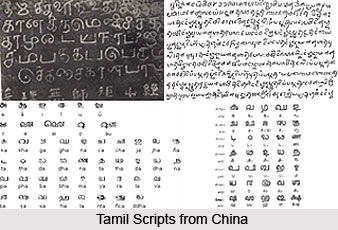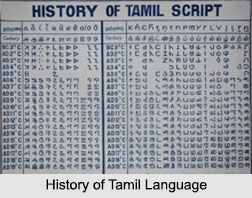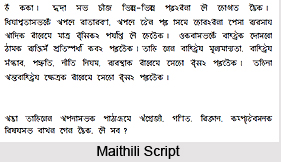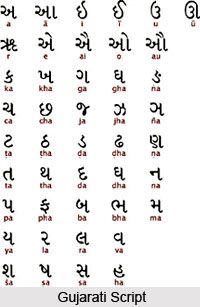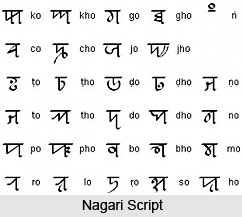Brahmi is the present-day name given to the oldest members of the Brahmic family of alphabets. The Brahmi script is one of the most classic writing systems in the world by merit of its time depth and authoritarian sway. The script represents the earliest post-Indus corpus of texts and some of the earliest historical inscriptions found in India. This highly elegant script made its appearance in India most certainly by the 5th century B.C.E. However the fact that it possessed numerous local versions even in the early texts suggests that its inception lies further back in time. The earliest known Brahmi scriptural inscriptions date back to 6th century B.C., discovered in various parts of South India and Sri Lanka. The best known inscriptions in Brahmi are illustrated by the rock-cut edicts of Ashoka in north-central India, also dated to 3rd century B.C.E. These were conceived as the earliest known illustrations of Brahmi writing for a long time until new discoveries shed fresh light upon the subject. Brahmi script was illustriously decrypted for the first time in 1837 by James Prinsep, an archaeologist, philologist and official of the British East India Company.
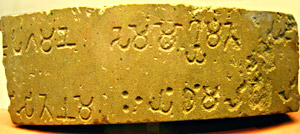 Brahmi script essentially represented an abugida, a consonantal script bettered by diacritics for vowels. It was pioneering and ground-breaking in its presentation, with the alphabet formatted in a grid (varga), complying by phonetic rationales. Brahmi is esteemed as being patrimonial to most scripts of South Asia, Southeast Asia and some Central Asian scripts like Tibetan and Khotanese.
Brahmi script essentially represented an abugida, a consonantal script bettered by diacritics for vowels. It was pioneering and ground-breaking in its presentation, with the alphabet formatted in a grid (varga), complying by phonetic rationales. Brahmi is esteemed as being patrimonial to most scripts of South Asia, Southeast Asia and some Central Asian scripts like Tibetan and Khotanese.
Preliminary originations of Brahmi script however are largely based upon historical and scholarly hypotheses and attestations, with historians putting forth their authoritative views on this exceedingly enigmatic scriptural deciphering. Brahmi script is believed by most scholars to be deduced or in the least influenced by a Semitic script, such as the Imperial Aramaic alphabet. This situation was visibly the case for the present day Kharosthi alphabet that originated and developed in a part of northwest India under the ascendancy of the Achaemenid Empire. A possibility of Brahmi script`s origination lies with the Achaemenid conquest in the late 6th century B.C.E., or that it was a contrived invention under emperor Ashoka as a prerequisite for his edicts.
A glimpse at the oldest Brahmi scriptural inscriptions exhibit outstanding analogues with contemporary Aramaic for the phonemes that are corresponding and comparable between the two languages. This phenomena in Brahmi script is noticed predominantly if the letters are alternated to reproduce the change in writing direction. Aramaic is written from right to left, as was Brahmi originally, while Brahmi later came to be penned from left to right. Brahmi and Aramaic scripts thus bear semblance in various usage of words and alphabets.
However, Semitic is not a good phonological equivalent to Indic, hence, any Semitic alphabet would have necessitated all-embracing adjustment to interpret Brahmi. In truth, this is the most credible circumstantial evidence for an associated correlation. For example, Aramaic did not severalise dental from retroflex stops; in Brahmi script, the dental and retroflex series represent much graphical similarity, as though both had been deduced from a single prototype. Aramaic did not possess Brahmi`s aspirated consonants, while, Brahmi did not possess Aramaic`s emphasised consonants; and it appears that these emphasised letters were used for Brahmi`s aspirates: Aramaic q for Brahmi kh, Aramaic t for Brahmi th. And just where Aramaic did not have an analogous emphasised stop, p, Brahmi seems to have doubled up for its aspirate: Brahmi p and ph bear much graphic similarity, as though borrowed from the same source in Aramaic p. The first letters of the alphabets also match: Brahmi a, which resembled an inverted ?, appears a good deal like Aramaic alef.
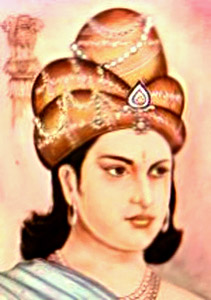 According to numerous Indian scholars, Brahmi script was a purely aboriginal maturation, conceivably with the Indus script serving as its forerunner. In northern India, there exists a break of more than a millennium between the Indus script and Brahmi. But, early remains of Brahmi from Sri Lanka and Tamil Nadu encompass samples that can also be dated to pre-Mauryan times. Since the Indus script was the longest to outlive in the south, the break with Brahmi can also be comparatively shorter there.
According to numerous Indian scholars, Brahmi script was a purely aboriginal maturation, conceivably with the Indus script serving as its forerunner. In northern India, there exists a break of more than a millennium between the Indus script and Brahmi. But, early remains of Brahmi from Sri Lanka and Tamil Nadu encompass samples that can also be dated to pre-Mauryan times. Since the Indus script was the longest to outlive in the south, the break with Brahmi can also be comparatively shorter there.
The contemporary times and its scientists, researchers and discoverers have been successful enough to uncover the various early regional variants in Indus script and its format. Declarations for such early dates embrace remains of pottery from the trading town of Anuradhapura in Sri Lanka, which have been dated to within the 6th and early 4th centuries B.C.E. Claims have also been staked upon pieces of pottery in Adichanallur, Tamil Nadu, which have been radio-carbon dated to the 6th century B.C.E.
The earliest linguistic substantiation of Brahmi script in a Dravidian language is derived from Bhattiprolu in Andhra Pradesh, ca. 400 B.C.E. The Bhattiprolu script was penned on an urn incorporating Buddhist relics, with the languages being Prakrit and old Telugu. Twenty-three letters from the said script have been identified thus far. The letters ga and sa are appear identical to Mauryan Brahmi, whereas bha and da correspond to those of modern Telugu script.
Brahmi script, with its illustrious background and usage, finds pride position and clear attestation from the 3rd century B.C.E. during the reign of emperor Ashoka. Ashokan inscriptions that are manifest from the imperial rock edicts, bear proof of Brahmi being used by the emperor to spread religious consciousness. It has since universally been hypothesised that the script was developed at around this time. The reason behind such action can be rested upon the reasons, both from the scarcity of previously dated examples, the `so-called` unpredictability of those previous dates and from the geometric steadiness of the script, which some have accepted to be confirmation that it had been recently contrived.
Brahmi scripts bear the characteristics of normally being written from left to right, as in the case of its descendants. However, a coin dated from 4th century B.CE has been discovered engraved with Brahmi running from right to left, just like in Aramaic scripts. Brahmi is essentially an abugida, standing for each letter exemplifying a consonant, whereas vowels are written with mandatory diacritics. When no vowel is inscribed, the vowel /a/ is realised. Special conjunct consonants are used to pen consonant bunches like /pr/ or /rv/. Going by Brahmi script, vowels succeeding a consonant are penned by diacritics, but preliminary vowels have dedicated letters. There are three vowels in Brahmi, namely /a, i, u/; long vowels are deduced from the letters for short vowels. Although, there exists only five vowel diacritics, as short /a/ is only realised if no vowel is written.
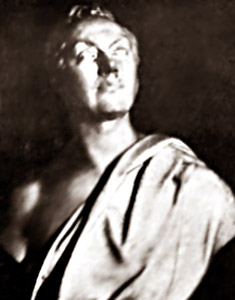 Punctuation status in Brahmi script can be comprehended like more of an exception as opposed to as a `general rule` in Ashokan Brahmi. For example, distinctive spaces in between the words come along recurrently in the pillar edicts, which is exactly not the case in others. In this context, pillar edicts pertain to the texts that are engraved on the stone pillars of times with the primary design to make them public. The concept of writing each word separately was not utilised time and again. During early Brahmi period, the reality of something called `punctuation marks` is not very well illustrated. Each letter has been penned in an independent manner, with some space between words and edicts intermittently.
Punctuation status in Brahmi script can be comprehended like more of an exception as opposed to as a `general rule` in Ashokan Brahmi. For example, distinctive spaces in between the words come along recurrently in the pillar edicts, which is exactly not the case in others. In this context, pillar edicts pertain to the texts that are engraved on the stone pillars of times with the primary design to make them public. The concept of writing each word separately was not utilised time and again. During early Brahmi period, the reality of something called `punctuation marks` is not very well illustrated. Each letter has been penned in an independent manner, with some space between words and edicts intermittently.
During the middle period of Brahmi, the system however appears to be progressing and building up. Use of a dash and a curved horizontal line is found to employed for the first time. A flower mark also appears to state the conclusion and a circular mark seems to designate the full stop. Although, there appear to exist versions of full stop.
During the late period of Brahmi script, the arrangement of inter-punctuation marks got further convoluted. For example, there were discovered four distinct forms of vertically slanted double dashes that looked somewhat like "//", used to mark the conclusion of the composition. Despite all the ornamental symbols that were available during the late period, the symbols remained pretty uncomplicated in the inscriptions. One of the feasible reasons for such manner can be rested upon the engraving which was restrained, whereas writing was not.
Four basic forms of the punctuation marks in Brahmi script can be mentioned as: 1) dash or horizontal bar, 2) vertical bar, 3) dot, and 4) circle.
Over the course of a millennium and with significant metamorphosis in ages that arrived, Brahmi descended into numerous regional scripts, commonly classed into a more rounded Southern India group and a more angular Northern India group. With time, these regional scripts became interrelated with the local languages that were adopted in the states. Alphabets of the Southern group spread with Hinduism and Buddhism into Southeast Asia, whereas the Northern group spread towards Tibet. Contemporary descendants of Brahmi are employed throughout India, Bangladesh, Sri Lanka, Nepal, Bhutan, Tibet and in various other Asian countries utilising Hinduism and Buddhism.
